Search results for: 'fiber b'
- Related search terms
- fiber cu
- fiber opening
- fiber d
- fiber line
- fiber blo
-
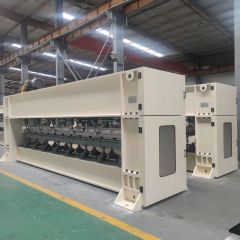 TT-1316 NONWOVEN MIDDLE SPEED NEEDLE LOOM, WORKING WIDTH 3200mmTT-1316 NONWOVEN MIDDLE SPEED NEEDLE LOOM, WORKING WIDTH 3200mm MACHINE STRUCTURE FEATURES: 1. SPLICING TYPE STRUCTURE, IT IS MADE BY HIGH QUALITY Q235 STEEL PLATE WELDING, THEN FINE TEMPERING QUALITATIVELY WITH SUFFICIENT COMPLETENESS AND STABILITY. UPPER AND DOWN MACHINE GIRDERS BOTH PRECISELY PROCESSING MACHINED. 2. ECCENTRIC BEARINGS ADOPT TORRINGTON FAMOUS BRAND 3. MAIN SHAFT IS USING 42CROMO MATERIAL. AFTER CONDITIONING TREATMENT FINE FINISHING AND GRINDING. 4. NEEDLE GIRDER HIGH SPEED TURBINE ELECTRIC LIFTING, STRIPPER PLATE TURBINE ELECTRIC LIFTING, NEEDLE GIRDER ROLLER SCALE DISPLAY. AIR LOCKED THE NEEDLE PLATE TIGHTLY. 5. NEEDLE PLATE LUOYANG MADE BY MAGNESIUM ALLOY DIE CASTING PLATE COMPOSITE PU, RADON ARRANGE NEEDLES HOLE φ1.82mm 6. INPUT PVC LATTICE, OUTPUT ROLLER ADOPTS φ155mm, HIGH QUALITY SEAMLESS STEEL PIPE, AFTER FINISHING GRINDING, THE SURFACE IS PLATED WITH HARD CHROME, UPPER ROLLER ADJUSTABLE HEIGHT AIR CYLINDER. 7. MAIN MOTOR, OUTPUT ROLLER ALL FREQUENCY CONTROL. 8. INSTALLED POWER: AROUND 15.5KW, MAIN MOTOR 11 KW. QUANTITY: 1 SET Learn More
TT-1316 NONWOVEN MIDDLE SPEED NEEDLE LOOM, WORKING WIDTH 3200mmTT-1316 NONWOVEN MIDDLE SPEED NEEDLE LOOM, WORKING WIDTH 3200mm MACHINE STRUCTURE FEATURES: 1. SPLICING TYPE STRUCTURE, IT IS MADE BY HIGH QUALITY Q235 STEEL PLATE WELDING, THEN FINE TEMPERING QUALITATIVELY WITH SUFFICIENT COMPLETENESS AND STABILITY. UPPER AND DOWN MACHINE GIRDERS BOTH PRECISELY PROCESSING MACHINED. 2. ECCENTRIC BEARINGS ADOPT TORRINGTON FAMOUS BRAND 3. MAIN SHAFT IS USING 42CROMO MATERIAL. AFTER CONDITIONING TREATMENT FINE FINISHING AND GRINDING. 4. NEEDLE GIRDER HIGH SPEED TURBINE ELECTRIC LIFTING, STRIPPER PLATE TURBINE ELECTRIC LIFTING, NEEDLE GIRDER ROLLER SCALE DISPLAY. AIR LOCKED THE NEEDLE PLATE TIGHTLY. 5. NEEDLE PLATE LUOYANG MADE BY MAGNESIUM ALLOY DIE CASTING PLATE COMPOSITE PU, RADON ARRANGE NEEDLES HOLE φ1.82mm 6. INPUT PVC LATTICE, OUTPUT ROLLER ADOPTS φ155mm, HIGH QUALITY SEAMLESS STEEL PIPE, AFTER FINISHING GRINDING, THE SURFACE IS PLATED WITH HARD CHROME, UPPER ROLLER ADJUSTABLE HEIGHT AIR CYLINDER. 7. MAIN MOTOR, OUTPUT ROLLER ALL FREQUENCY CONTROL. 8. INSTALLED POWER: AROUND 15.5KW, MAIN MOTOR 11 KW. QUANTITY: 1 SET Learn More -
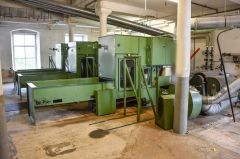 TT-1143 HERGETH MBK/W FIBER OPENING LINETT-1143 HERGETH MBK/W FIBER OPENING LINE QUANTITY: 1 Learn More
TT-1143 HERGETH MBK/W FIBER OPENING LINETT-1143 HERGETH MBK/W FIBER OPENING LINE QUANTITY: 1 Learn More -
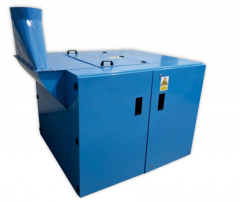 YY-2093 FIBER OPENERYY-2093 FIBER OPENER THE OPENER IS INCORPORATED INTO OUR MIXING SYSTEM. POWER: UP TO 7KW WEIGHT: 1200KG QUANTITY: 1 Learn More
YY-2093 FIBER OPENERYY-2093 FIBER OPENER THE OPENER IS INCORPORATED INTO OUR MIXING SYSTEM. POWER: UP TO 7KW WEIGHT: 1200KG QUANTITY: 1 Learn More -
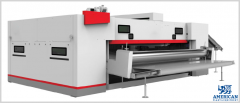 J-4121 HIGH-SPEED CROSS LAPPER, INPUT WIDTH 2900mm, OUTPUT WIDTH 4500mm, 80 METERS/MINUTEJ-4121 HIGH-SPEED CROSS LAPPER, INPUT WIDTH 2900mm, OUTPUT WIDTH 4500mm, 80 METERS/MINUTE APPLICATION: USED TO FOLD EVENLY AND LAP THE FIBER WEBS INTO CERTAIN WIDTH AND THICKNESS INPUT WIDTH: 2900mm OUTPUT WIDTH: 4500mm SPEED: 80 METERS PER MINUTE QUANTITY: 1 Learn More
J-4121 HIGH-SPEED CROSS LAPPER, INPUT WIDTH 2900mm, OUTPUT WIDTH 4500mm, 80 METERS/MINUTEJ-4121 HIGH-SPEED CROSS LAPPER, INPUT WIDTH 2900mm, OUTPUT WIDTH 4500mm, 80 METERS/MINUTE APPLICATION: USED TO FOLD EVENLY AND LAP THE FIBER WEBS INTO CERTAIN WIDTH AND THICKNESS INPUT WIDTH: 2900mm OUTPUT WIDTH: 4500mm SPEED: 80 METERS PER MINUTE QUANTITY: 1 Learn More -
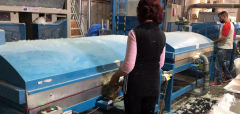 J-3422 COMPLETE NOWO PILLOW FILLING LINE, MODEL VAC, YEAR 2013 – 2 FILLING STATIONS CAPACITY: 8 TO 10 PILLOWS PER MINUTEJ-3422 COMPLETE NOWO PILLOW FILLING LINE, MODEL VAC, YEAR 2013 – 2 FILLING STATIONS CAPACITY: 8 TO 10 PILLOWS PER MINUTE STATUS: CURRENTLY RUNNING, AVAILABLE MAY 2021 QUANTITY: 1 Learn More
J-3422 COMPLETE NOWO PILLOW FILLING LINE, MODEL VAC, YEAR 2013 – 2 FILLING STATIONS CAPACITY: 8 TO 10 PILLOWS PER MINUTEJ-3422 COMPLETE NOWO PILLOW FILLING LINE, MODEL VAC, YEAR 2013 – 2 FILLING STATIONS CAPACITY: 8 TO 10 PILLOWS PER MINUTE STATUS: CURRENTLY RUNNING, AVAILABLE MAY 2021 QUANTITY: 1 Learn More -
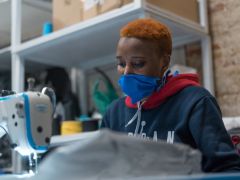 D-2388 What’s the Best Material for a Mask?
D-2388 What’s the Best Material for a Mask?Federal health officials have now recommended that we cover our faces with fabric during the coronavirus pandemic. But what material offers the most protection?
The Centers for Disease Control and Prevention has posted a no-sew mask pattern using a bandanna and a coffee filter as well as a video on making masks using rubber bands and folded fabrics found at home.
While a simple face covering can reduce the spread of coronavirus by blocking outgoing germs from coughs or sneezes of an infected person, experts say there is more variation in how much homemade masks might protect the wearer from incoming germs, depending on the fit and quality of the material used.
Scientists around the country have taken it upon themselves to identify everyday materials that do a better job of filtering microscopic particles. In recent tests, HEPA furnace filters scored well, as did vacuum cleaner bags, layers of 600-count pillowcases and fabric similar to flannel pajamas. Stacked coffee filters had medium scores. Scarves and bandanna material had the lowest scores, but still captured a small percentage of particles.
If you don’t have any of the materials that were tested, a simple light test can help you decide whether a fabric is a good candidate for a mask.
“Hold it up to a bright light,” said Dr. Scott Segal, chairman of anesthesiology at Wake Forest Baptist Health who recently studied homemade masks. “If light passes really easily through the fibers and you can almost see the fibers, it’s not a good fabric. If it’s a denser weave of thicker material and light doesn’t pass through it as much, that’s the material you want to use.”
Researchers say it’s important to remember that lab studies are conducted under perfect conditions with no leaks or gaps in the mask, but the test methods give us a way to compare materials. And while the degree of filtration for some homemade masks seems low, most of us — who are staying home and practicing social distancing in public — don’t need the high level of protection required for medical workers. More important, any face covering is better than none, especially if worn by a person who has the virus but doesn’t know it.
The biggest challenge of choosing a homemade mask material is to find a fabric that is dense enough to capture viral particles, but breathable enough that we can actually wear it. Some items being touted online promise high filtration scores, but the material would be unwearable.
Dressing Up for Work … at Home
Yang Wang, an assistant professor of environmental engineering at Missouri University of Science and Technology, worked with his graduate students to study various combinations of layered materials — including both air filters and fabric. “You need something that is efficient for removing particles, but you also need to breathe,” said Dr. Wang, who last fall won an international award for aerosol research.To test everyday materials, scientists are using methods similar to those used to test medical masks, which everybody agrees should be saved for medical workers who are exposed to high doses of virus from seeing infected patients. The best medical mask — called the N95 respirator — filters out at least 95 percent of particles as small as 0.3 microns. By comparison, a typical surgical mask — made using a rectangular piece of pleated fabric with elastic ear loops — has a filtration efficiency ranging from 60 to 80 percent.
Dr. Wang’s group tested two types of air filters. An allergy-reduction HVAC filter worked the best, capturing 89 percent of particles with one layer and 94 percent with two layers. A furnace filter captured 75 percent with two layers, but required six layers to achieve 95 percent. To find a filter similar to those tested, look for a minimum efficiency reporting value (MERV) rating of 12 or higher or a microparticle performance rating of 1900 or higher.
The problem with air filters is that they potentially could shed small fibers that would be risky to inhale. So if you want to use a filter, you need to sandwich the filter between two layers of cotton fabric. Dr. Wang said one of his grad students made his own mask by following the instructions in the C.D.C. video, but adding several layers of filter material inside a bandanna.
Dr. Wang’s group also found that when certain common fabrics were used, two layers offered far less protection than four layers. A 600 thread count pillow case captured just 22 percent of particles when doubled, but four layers captured nearly 60 percent. A thick woolen yarn scarf filtered 21 percent of particles in two layers, and 48.8 percent in four layers. A 100 percent cotton bandanna did the worst, capturing only 18.2 percent when doubled, and just 19.5 percent in four layers.
The group also tested Brew Rite and Natural Brew basket-style coffee filters, which, when stacked in three layers, showed 40 to 50 percent filtration efficiency — but they were less breathable than other options.
If you are lucky enough to know a quilter, ask them to make you a mask. Tests performed at the Wake Forest Institute for Regenerative Medicine in Winston-Salem, N.C., showed good results for homemade masks using quilting fabric. Dr. Segal, of Wake Forest Baptist Health, who led the study, noted that quilters tend to use high-quality, high-thread count cotton. The best homemade masks in his study were as good as surgical masks or slightly better, testing in the range of 70 to 79 percent filtration. Homemade masks that used flimsier fabric tested as low as 1 percent filtration, Dr. Segal said.
The best-performing designs were a mask constructed of two layers of high-quality, heavyweight “quilter’s cotton,” a two-layer mask made with thick batik fabric, and a double-layer mask with an inner layer of flannel and outer layer of cotton.
Bonnie Browning, executive show director for the American Quilter’s Society, said that quilters prefer tightly woven cottons and batik fabrics that stand up over time. Ms. Browning said most sewing machines can handle only two layers of fabric when making a pleated mask, but someone who wanted four layers of protection could wear two masks at a time.
Ms. Browning said she recently reached out to quilters on Facebook and heard from 71 people who have made a combined total of nearly 15,000 masks. “We quilters are very much in the thick of what’s going on with this,” said Ms. Browning, who lives in Paducah, Ky. “One thing most of us have is a stash of fabric.”
People who don’t sew could try a folded origami mask, created by Jiangmei Wu, assistant professor of interior design at Indiana University. Ms. Wu, who is known for her breathtaking folded artwork, said she began designing a folded mask out of a medical and building material called Tyvek, as well as vacuum bags, after her brother in Hong Kong, where mask wearing is common, suggested it. (DuPont, the maker of Tyvek, said in a statement that Tyvek is intended for medical apparel, not masks.) The folded mask pattern is free online, as is a video demonstrating the folding process. In tests at Missouri University and University of Virginia, scientists found that vacuum bags removed between 60 percent and 87 percent of particles. But some brands of vacuum bags may contain fiberglass or are harder to breathe through than other materials, and shouldn’t be used. Ms. Wu used a bag by EnviroCare Technologies, which has said it does not use fiberglass in its paper and synthetic cloth bags.
“I wanted to create an alternative for people who don’t sew,” said Ms. Wu, who said she is talking to various groups to find other materials that will be effective in a folded mask. “Given the shortage of all kinds of materials, even vacuum bags might run out.”
The scientists who conducted the tests used a standard of 0.3 microns because that is the measure used by the National Institute for Occupational Safety and Health for medical masks.
Linsey Marr, a Virginia Tech aerosol scientist and an expert in the transmission of viruses, said the certification method for respirators and HEPA filters focuses on 0.3 microns because particles around that size are the hardest to catch. While it seems counterintuitive, particles smaller than 0.1 microns are actually easier to catch because they have a lot of random motion that makes them bump into the filter fibers, she said.
“Even though coronavirus is around 0.1 microns, it floats around in a wide range of sizes, from around 0.2 to several hundred microns, because people shed the virus in respiratory fluid droplets that also contain lots of salts and proteins and other things,” said Dr. Marr. “Even if the water in the droplets fully evaporates, there’s still a lot of salt and proteins and other gunk that stays behind as solid or gel-like material. I think 0.3 microns is still useful for guidance because the minimum filtration efficiency will be somewhere around this size, and it’s what NIOSH uses.”
Learn More -
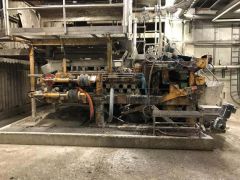 R-7245 ESCHER WYSS AND VOITH COMPLETE TISSUE MILL, YEAR 1988 OVERHAULED 1998 AND 2013
R-7245 ESCHER WYSS AND VOITH COMPLETE TISSUE MILL, YEAR 1988 OVERHAULED 1998 AND 2013REFERENCE NUMBER: R-7245
Learn More
EXCELLENT QUALITY 7.2M PAPER MACHINE
INSTALLATION BUILT BY: ESCHER WYSS AND VOITH
CAPACITY: 60 TO 80 TPD
VOITH AND ESCHER WYSS CAPACITY: 80 TPD
INSTALLED IN 1988 OVERHAULED 1998 AND 2013
MACHINE TYPE TWIN WIRE (TISCO FORMER)
YANKEE DIAMETER 3600V
SPEED MACHINE 1310 M/MIN
TABLE WIDTH 2690mm (AFTER REWINDER 2660mm)
QUANTITY: 1 -
 L-1177 TRUTZSCHLER/RIETER COMPLETE SPINNING MILL
L-1177 TRUTZSCHLER/RIETER COMPLETE SPINNING MILLL-1177 TRUTZSCHLER/RIETER COMPLETE SPINNING MILL
BLOW ROOM TRÜTZSCHLER
1 MONOTAMBOUR B4/1, YEAR 1989
1 MULTIMIXER MCM 6 /1200 YEAR 1997 + 1 CVT-4 / 1200 YEAR 1997
1 JOSSI THE VISION SHIELD FIBER DETECTOR EA-33-S YEAR 2002
1 DUSTEX DX 385 YEAR 1997
1 JOSSI THE SHIELD HIGH PERFORMANCE FIRE DETECTOR
TYPE D-11-250, YEAR 2005
3 TRÜTZSCHLER FAN
1 UNIMIX RIETER + ERM CLEANER RIETER
QUANTITY: 1BLOW ROOM RIETER
2 ERM B 5/5 YEAR 1989
1 ERM B 5/5 YEAR 1987
1 ERM B 5/5 YEAR 1988
2 JOSSI FIRE DETECTOR D-11-250 YEAR 2005
1 JOSSI FIBRE DETECTOR EA-33-S, YEAR 2002
3 BALE PRESS RIETER B3/4S, YEAR 1990-1991
QUANTITY: 1
CARDS TRÜTZSCHLER DK-803, YEAR 1996/ 1997 (3) COILER KH 950-1200,
AUTOMATIC REVOLVER, FEEDING FBK-533
QUANTITY: 3
CARDS TRÜTZSCHLER DK-903, YEAR 2002/2003 (1) COILER KH 600-1200, (2) COILER KH 450-1200
AUTOMATIC REVOLVER, FEEDING DKF
QUANTITY: 3
DRAWING FRAME TRÜTZSCHLER HSR-1000X2 , YEAR 2003, 1 DELIVERY 18” (450X1000), CREEL 8 CANS,
SLIVER MONITOR, AUTOLEVELLER
QUANTITY: 2
2 ROVING FRAME SIMPLEX ZINZER 670, YEAR 2003, DRAFT PK 1500, 120 SPINDLES,
CAPACITY BOBBIN 16”X6”, DRIVER CREEL, COLLECTIVE ASPIRATION,
INDIVIDUAL BLOWER ELECTRO-JET
2 AUTOMATIC TRANSPORT INSTALLATION FOR BOBBINS ELECTRO-JET
FOR 8 RING SPINNING FRAME OF 1.200 SPINDLES, YEAR 2003
QUANTITY: 1
5 RING SPINNING FRAME ZINZER RM 351, YEAR 2002 (4), YEAR 2003 (1), 1200 SPINDLES,
GAUGE 70 MM
DRAFT PK 2500, RING 42 MM, TUBE 220 MM, COWEMAT, COLLECTIVE ASPIRATION, INDIVIDUAL BLOWER
ELECTRO-JET WITH AUTOMATIC UNLOADING, TOTAL LENGTH 47 M
4 WINDER SCHLAFHORST 338 RM, 2 X YEAR 2002, COLOUR GREEN, 2 X YEAR 2003, COLOUR WHITE, 60 POSITIONS
MAGAZINE FEEDING 6 TUBES, 2 ROBOTS, WAXING, AUTOMATIC CONE CHANGE, TK-840,
CLEARER LOEPFE, DELIVERY 4.20 X 6”, INDIVIDUAL BLOWER
QUANTITY: 1
1 AUTOCORO SCHLAFHORST SE-11 ACO-288, YEAR 2001, 216 ROTORS, INFORMATOR,
DELIVERY CYLINDRICAL SLUBIER PINTER, ROTOR Ø 28-36-40 MM , ROLLERS B-174, CLEARERS COROLAB,
WAXING, 2 ROBOTS CONE CHANGE ROBOTS PIECERS
QUANTITY: 1
1 AUTOCORO SCHLAFHORST SE-9, 216 ROTORS, 2 ROBOTS, WAXING, COROLAB
INFORMATOR, YEAR 1998
QUANTITY: 1
1 INSTALLATION LTG, YEAR 2003, 5 PARTS, WASTE COLLECTING, AIR SYSTEM
1 INSTALLATION LTG, YEAR 2003, 3 PARTS, WASTE COLLECTING, AIR SYSTEM
1 INSTALLATION LTG, YEAR 2003, 5 PARTS, WASTE COLLECTING, CARDING FILTRATION
- POWER 380V/50HZ
- CONDITION COMPLETED
QUANTITY: 1
RIETER SPINNING COMBING PLANT
BLOW ROOM RIETER
UNIFLOC RIETER, A1/2, YEAR 2000
UNIMIX RIETER , B7/3, YEAR 2000
UNILEX B60, YEAR 2000
JOSSI , D-21-370-01, YEAR 2000
QUANTITY: 1
CARDS RIETER
10 X CARD RIETER C51, YEAR 2000, WITH IGS
WITH LUWA WASTE SYSTEM
QUANTITY: 10
1 X CARD RIETER C60 WITH MODUL IGS
YEAR :
QUANTITY: 1
DRAWING FRAMES RIETER
2 X DRAWING FRAME RIETER, SB-D10, YEAR 2000
QUANTITY: 2
1 X DRAW FRAME RIETER, RSB-D30C, YEAR 2000
QUANTITY: 1
2 X DRAWING FRAME RIETER, D-30QUANTITY: 2
1 X DRAWING FRAME RIETER, D-35QUANTITY: 1
COMBERS RIETER
1 X UNILAP RIETER E33, YEAR 2000
WITH TRANSPORT SYSTEM SCHONENBERGER , ARS-N2, 2000
5 X COMBING MACHINE RIETER , E72, YEAR 2000
1 X COMBING MACHINE RIETER, E75, YEAR 2006
1 X SERVOLAP RIETER , E25, YEAR 2000
WITH WASTE COLLECT SYSTEM AND PRESS
QUANTITY: 1
FLYERS RIETER
3 X ROVING FRAME RIETER, F33/120POS, YEAR 2000
AUTOMATIC BOBINES TRANSPORT , SCHONENBERGER , YEAR 2000
QUANTITY: 1
RING SPINNING MACHINES RIETER
6 X SPINNING FRAME RIETER G33
6 RIETER RINGFRAMES, TYPE G33, BUILT 1999, EACH WITH 1200 SPINDLES, RING DIAMETER 38 MM, TYPE SFB-TITAN, GAUGE 70 MM, LIFT 187 MM, SPINDLE TYPE HPS 25, AUTOMATIC DRAFTING SYSTEM, WITH AUTODOFFER AND MAGITEX OVERHEAD CLEANER, LINKED WITH MURATA CONER, TYPE 7V-II, BUILT 1999, EACH WITH 32 WINDING HEADS, AUTOMATIC FEEDING, AUTOMATIC PACKAGE CONVEYOR, YARN CLEARERS USTER QUANTUM WITH FIBER DETECTOR, MK-C-15F23, WITH WAXING, INFORMATOR MMC/3, CONICITY 4 DEG. 20 , VOLTAGE : 380V, 50HZ
QUANTITY: 61 X MURATA MINICONER
Learn More
LUWA AIRCONDITION, YEAR 2005
LUWA FILTER FOR CADING, YEAR 2005
LUWA FILTER FOR COMBING, YEAR 2005
LUWA FILTER FOR SPINNING AND WINDING, YEAR 2005
QUANTITY: 1 -
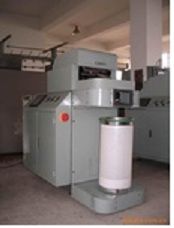 K-3893 LABORATORY DRAWING MACHINE
K-3893 LABORATORY DRAWING MACHINEREFERENCE NUMBER: K-3893
LABORATORY DRAWING MACHINE
MACHINE: X-A2 LABORATORY
NAME:DRAWING MACHINE
MODEL: X-A2
BASIC FUNCTION: THREE UPPER AND THREE LOWER DRAFTING/EXTENSION DEVICES, STRAIGHTEN FIBER AND IMPROVE EVENESS
TECHNIQUE DATA:
CONTROL: TOUCH SCREEN+ PLC
FIBER LENGTH: 22mm TO 64mm
OUTPUT: ABOUT 0.25KG TO 1 KG
DRAFTING ROLLER SIZE: Φ35mm
OUTPUT SPEED: ABOUT 12M/MIN
DRAFTING RATIO: ABOUT 2-10
CAN SIZE: Φ250mm×550mm
TOTAL POWER: 950W
VOLTAGE: 220/3×380V AC 50/60Hz
MACHINE DIMENSIONS: 1200mm×800mm×1200mm
Learn More -
 K-3886 LABORATORY CARDING MACHINE (NEW)
K-3886 LABORATORY CARDING MACHINE (NEW)REFERENCE NUMBER: K-3886
LABORATORY CARDING MACHINE (NEW)
MACHINE: 1-T LABORATORY CARDING
NAME:MACHINE
MODEL: 1 T
BASIC FUNCTION: FED WITH COTTON (OR POLYESTER) FIBER, CARDING WEB EVENLY
TECHNIQUE DATA:
CONTROL METHOD: TOUCH SCREEN+ PLC
FIBER LENGTH: 22mm TO 42mm
OUTPUT: ABOUT 0.25 TO 1 KG
CYLINDER SIZE: Φ300mm×250mm
CYLINDER SPEED: 1000 RPM
DOFFER SIZE: Φ160mm×250mm
TOTAL POWER: 1200W
OUTPUT MODE: EXTENDING COTTON WEB
VOLTAGE: 220/3×380V AC 50/60Hz
MACHINE DIMENSIONS: 2100mm×800mm×1300mm
Learn More
